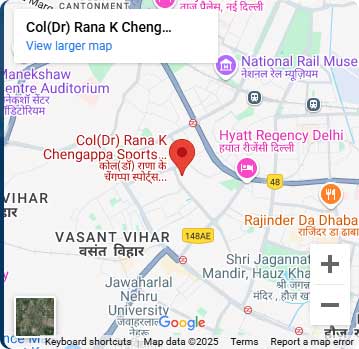Biomechanical Errors In Runners And How To Fix Them
Running is a form of aerobic exercise, which involves full body movements.
Biomechanical error during running can cause various injuries and inefficiency.
Correcting these mistakes can help in improving performance, enhance running
efficiency and reduce injury risk.
Here are some common errors-
1. Overstriding- overstriding is when your foot lands too far ahead of your body,
increasing impact forces on joints, slowing forward momentum. It causes a high
impact on the hip and knees. Increases risk of knee pain, shin splints and stress
fracture. Reduces running efficiency.
How to fix it-
●
Increase your cadence- (No. of steps per minute) Increase number of steps
by 170-180 steps per minute.
●
Keep your stride shorter and quicker
●
Focus on midfoot and forefoot landing
2. Insufficient hip extension- Hip extension is backward motion of leg after foot
contact. Limited hip extension puts more pressure on smaller muscles reduces push
off power.This leads to compensation like overusing the lower back muscles. It
also causes tightness in hip flexors and quadriceps muscle.
How to fix it-
●
Strengthening of glutes and hamstring muscles increases hip extension.
●
Hip mobility and dynamic stretches.
●
Perform drills like butt kicks and high knees to correct mechanics.
3. Heel strike with locked knee- Heel striking with a locked knee, creates excessive
impact forces, increases stress on the knee joint. It slows down momentum, leading
to knee pain.
How to fix it-
●
Strengthening glutes and hamstrings improves leg control.
●
Improve ankle mobility for a better stride.
●
Slight bending the knee while landing absorbs force.
4. Lack of core stability- weak core causes poor posture while running, leads to
excessive trunk movement, decreases running efficiency. Increase injury risk, can
lead to lower back ache also.
How to fix it-
●
Perform core strengthening exercises like planks.
●
Work on posture alignment while running
●
Engage lower abs and glutes while running for better stability.
5. Poor arm swing- Excessive swing of arm, stiff arm reduces balance and
efficiency. It reduces energy, can cause tension in shoulders and upper body.
How to fix it-
●
Keep arms at 90 degree angle and swing them in forward-backward motion.
●
Ensuring arm movement coordination with stride for momentum
●
Relax shoulders and arms to prevent tension.
Conclusion
Biomechanical errors during running are very common but fixable.Adjusting stride
length, cadence, improving posture and strengthening will reduce injury risk and
improve running speed and endurance.




